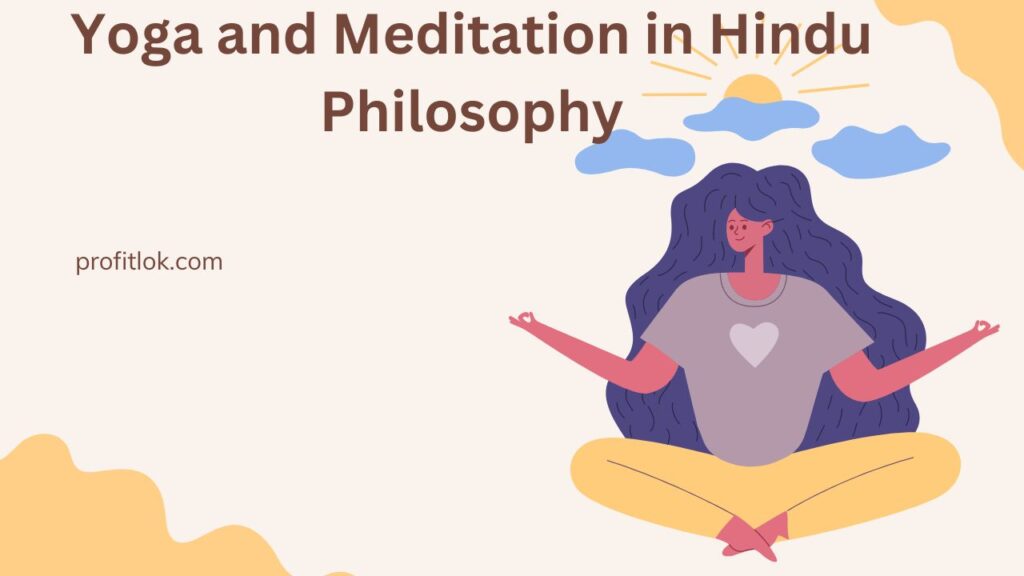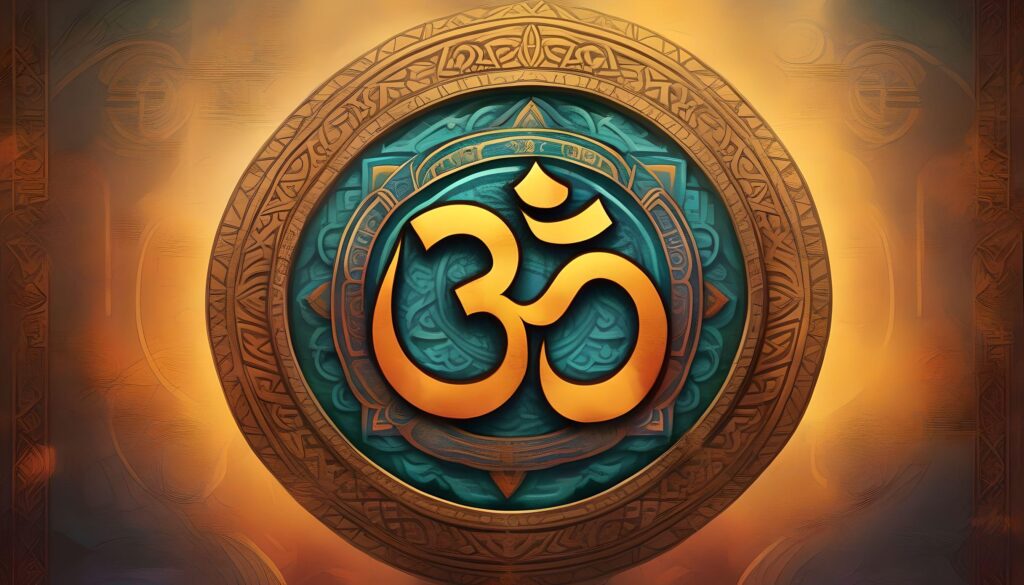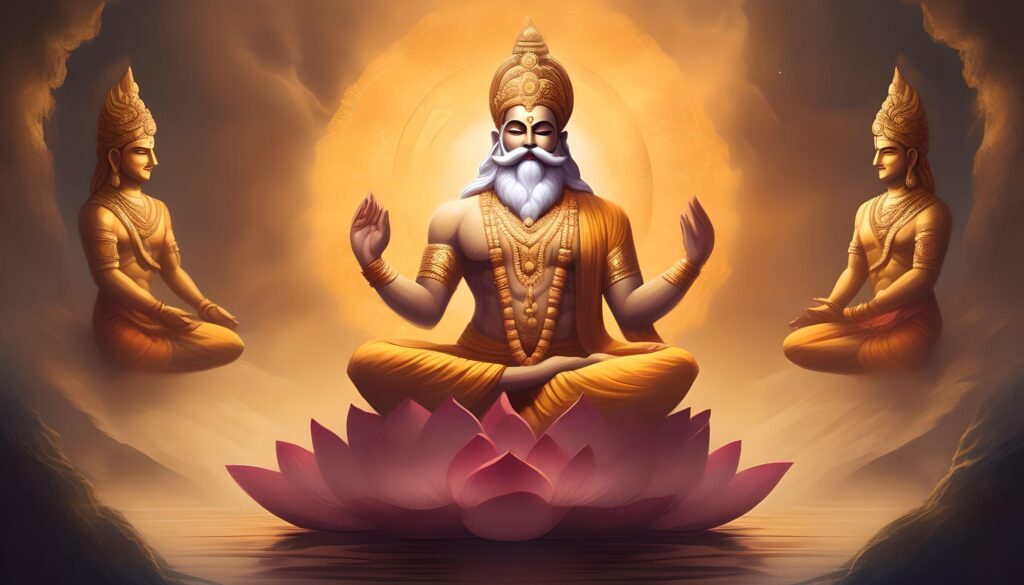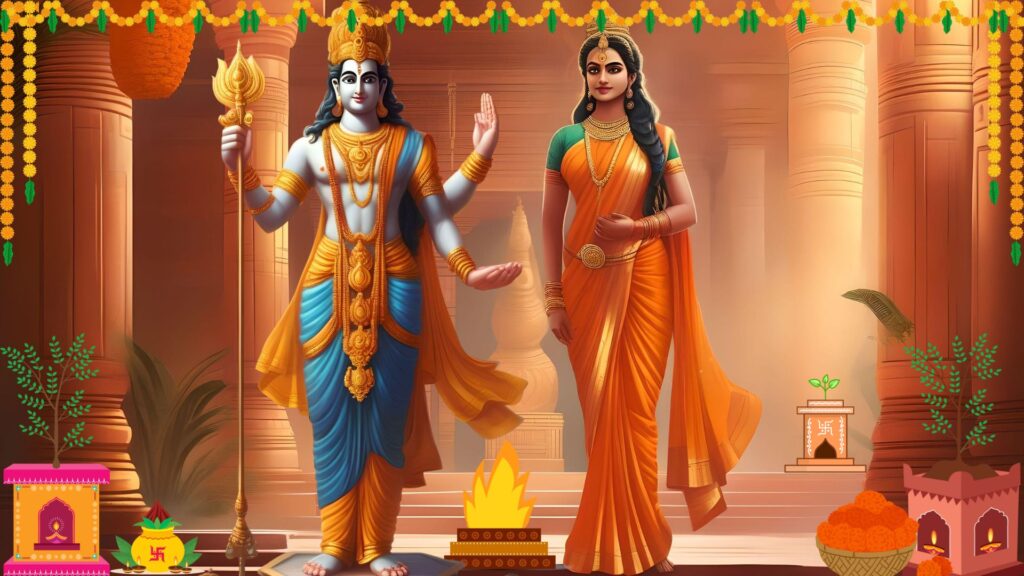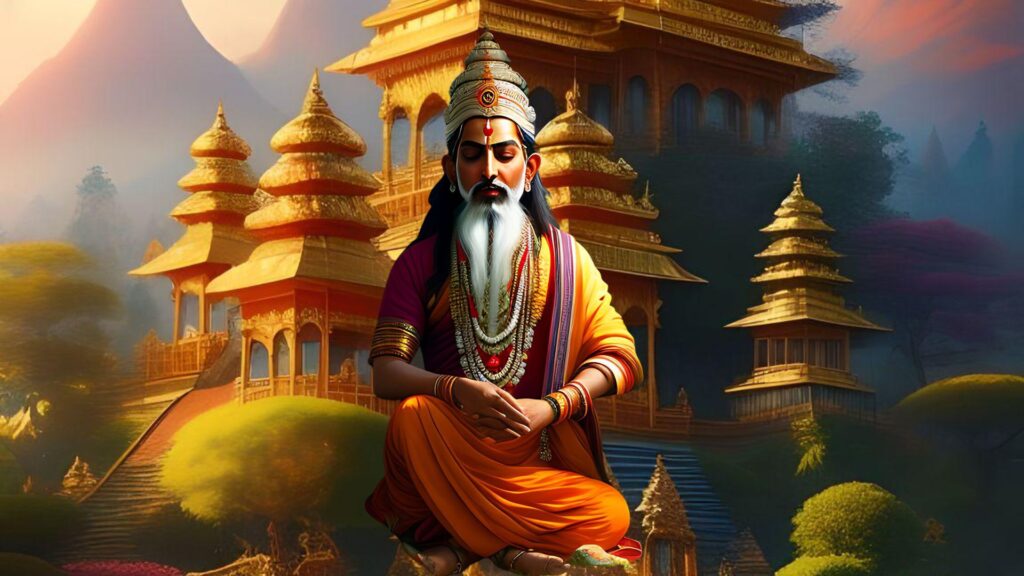Yoga and Meditation in Hindu Philosophy : Exploring the Spiritual Path to Liberation
Yoga and Meditation in Hindu Philosophy: Yoga, a set of ancient spiritual practices originating in India, holds a significant place within Hinduism. It is considered a powerful tool for achieving liberation and self-realization. While yoga has gained popularity in the West as a physical exercise, its roots in Hindu philosophy delve much deeper. This article explores the historical development of yoga in Hinduism, its transformation from external rituals to inner spiritual practices, and its ultimate goal of attaining liberation.
The Evolution of Yoga in Hinduism
Yoga’s origins can be traced back to the Upanishads, ancient Hindu scriptures composed between the fifth and third century BCE. Initially, yoga in the Vedic religion focused on performing rituals and ceremonies to appease the gods. However, as the concept of liberation, or moksha, gained prominence in ancient Indian Hinduism, yoga gradually shifted its emphasis from external rituals to inner spiritual practices.
The classical system of yoga, known as ashtanga yoga, was formulated by the sage Patanjali. Ashtanga yoga, meaning “eight-limbed yoga,” consists of eight progressive steps or limbs: yama, niyama, asana, pranayama, pratyahara, dharana, dhyana, and samadhi. Each limb represents a specific aspect of the yogic journey towards self-realization and liberation.
- Yama: Yama refers to ethical discipline and involves abstaining from violence, lying, theft, illicit sex, and possessiveness.
- Niyama: Niyama focuses on observances and includes rules, purity, contentment, austerities, study, and surrendering to God.
- Asana: Asana pertains to physical postures used in yoga practice. These postures help prepare the body and mind for meditation.
- Pranayama: Pranayama involves breath control techniques that regulate the flow of life force energy, or prana, within the body.
- Pratyahara: Pratyahara signifies withdrawal from the senses, directing attention inward and disconnecting from external distractions.
- Dharana: Dharana refers to concentration or one-pointedness of the mind, focusing on a specific object or mantra.
- Dhyana: Dhyana is meditation, a state of deep concentration where the mind is free from distractions and attuned to a higher level of awareness.
- Samadhi: Samadhi is the ultimate state of consciousness or trance, where the practitioner realizes their true nature and achieves liberation, moksha, transcending the limitations of the mortal body.
The Significance of Yoga in Hindu Philosophy
Yoga, as described in Hindu philosophy, is a profound spiritual practice that aims to tame the mind and unite the individual self, or atman, with the universal divine, Brahman. It is not merely a physical exercise but a holistic path towards self-realization and liberation.
In Hinduism, yoga is deeply intertwined with the concept of moksha. Moksha is the ultimate goal of human existence, representing liberation from the cycle of birth, death, and rebirth, known as samsara. Attaining moksha is viewed as a state of profound peace, joy, and unity with all of creation.
The spiritual connection between yoga and Hinduism is rooted in the ancient texts and scriptures. The Rishis, revered sages and seers, were instrumental in refining and developing yoga practices. Their wisdom and insights were documented in the Upanishads, a significant body of work comprising over 200 scriptures. These scriptures were passed down through generations, forming the foundation of yogic philosophy and practice.
The Paths of Yoga
Yoga provides multiple paths through which individuals can embark on their spiritual journey. These paths cater to different temperaments and inclinations, allowing practitioners to choose the path that resonates with them the most. The four primary paths of yoga are:
- Karma Yoga: Karma yoga emphasizes selfless service and the fulfillment of one’s duties. By engaging in selfless actions without attachment to results, individuals purify their hearts, sublimate their egos, and cultivate a sense of oneness.
- Bhakti Yoga: Bhakti yoga focuses on devotion and emotional connection with the divine. Through prayer, chanting, and participation in rituals, individuals develop humility, surrender, and deep love for the divine.
- Jñāna Yoga: Jñāna yoga involves intellectual inquiry and self-inquiry. Through questioning, reflection, and meditation on the nature of truth, individuals seek to attain self-knowledge and a deeper understanding of reality.
- Rāja Yoga: Rāja yoga, also known as the yoga of mind control, encompasses various techniques such as Hatha yoga. It involves physical postures, breathing exercises, cleansing practices, and meditation to gain mastery over the body, mind, and senses.
Hatha Yoga: The Physical Practice
Hatha yoga, a popular form of yoga practiced in the West, was developed by the Rishis as a preparatory practice for meditation. The term “Hatha” derives from the Sanskrit words “ha” and “tha,” symbolizing the union of opposing energies within the body – the sun and moon energies. Hatha yoga aims to bring balance and harmony by harnessing physical force and effort.
In the Western world, Hatha yoga has gained widespread recognition as a physical fitness regimen. However, it is essential to understand that the physical practice alone is incomplete. Hatha yoga serves as a means to prepare the body and mind for deeper spiritual practices and meditation.
Yoga masters have emphasized that calming the mind and attaining inner stillness is the true essence of yoga, not merely performing physical postures. The physical practice of yoga should be accompanied by an understanding of its philosophical aspects and its potential for spiritual growth.
The Spiritual Connection Between Yoga and Hinduism
Yoga and Hinduism are deeply intertwined, with yoga serving as a spiritual practice within the broader framework of Hindu philosophy. The ultimate aim of yoga is to purify and prepare the body and mind to recognize the inherent divine nature within oneself and unite with the universal divine.
The Hindu concept of the self, or Atman, is closely linked to yoga’s spiritual purpose. Atman, often translated as “soul” or “breath,” represents the eternal personality or universal self. It is believed to be identical with Brahman, the ultimate reality underlying all phenomena. By realizing this identity and uniting with the divine, individuals can attain Moksha, liberation from the cycle of birth and death.
Yoga, as a spiritual practice, involves self-knowledge, selfless action, and the sacrifice of ego and desires. It helps individuals cultivate a deeper understanding of their true nature and their connection with the divine. Through yoga, one can embark on a transformative journey towards spiritual growth, enlightenment, and the ultimate goal of liberation.
Conclusion
Yoga, deeply rooted in Hindu philosophy, offers a profound path to spiritual growth and self-realization. Its ancient practices, as refined by the Rishis, provide individuals with various approaches to unite their minds, bodies, and spirits with the divine. While yoga has gained popularity in the West as a physical exercise, it is crucial to recognize its spiritual essence and philosophical underpinnings.
By understanding the historical development of yoga, the eightfold path of ashtanga yoga, and the significance of yoga within Hinduism, practitioners can embark on a transformative journey towards self-discovery, inner peace, and liberation. Yoga serves as a powerful tool for taming the mind, cultivating awareness, and realizing the inherent divine nature within oneself, ultimately leading to a profound sense of unity with the universe.
